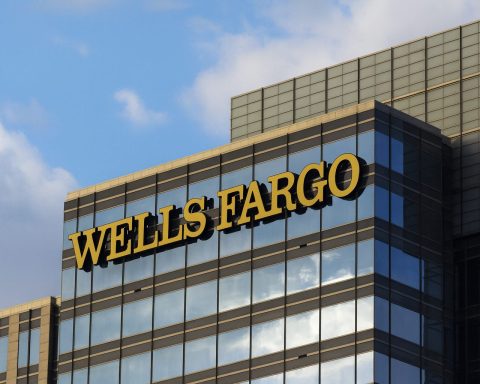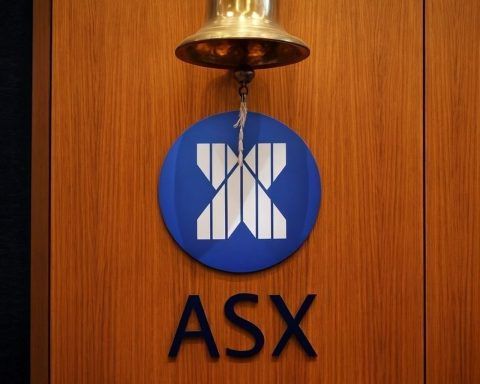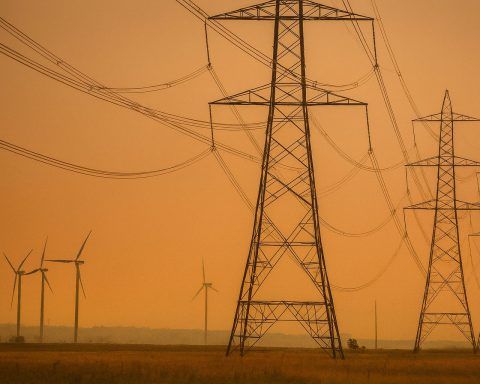- Inflation surprise: Australia’s Q3 CPI jumped 1.3% quarter-on-quarter (annual 3.2%) vs 1.1% expected [1]. Core “trimmed mean” inflation accelerated to 1.0% (3.0% annualised) vs 0.8% forecast [2] [3]. Both readings topped the RBA’s 2–3% target band.
- Rate cuts dashed: Markets slashed rate-cut odds. The chance of a November rate cut is now ~8% (down from 40% pre-data), and December is under 25% [4]. Major banks (CBA, Westpac, etc.) now see no further cuts in 2025, with the RBA likely to “remain on hold” at 3.60% [5] [6].
- Market turmoil: The ASX 200 fell about 0.6–1.0% on the news, trading near 8,940–8,960 points [7] [8]. Banks and insurers led losses (Big Four down ~0.6–1.7%), and healthcare was also weak (CSL –4.8%) [9]. By contrast, miners gained ~0.9% (BHP +0.7%) [10]. The Australian dollar jumped to ~US$0.66 (a 3-week high) as rate-cut expectations evaporated [11] [12].
- Expert consensus: Economists say RBA is “unlikely to cut this year.” CBA’s economics team now expects the cash rate to stay at 3.6% “for a prolonged period” [13]. Oxford Economics still pencils in two cuts in early 2026 [14], but many have pushed cuts into late 2026 or beyond. One forecast (pre-data) had the cash rate returning to ~3.0% by mid-2026 [15] – that now looks optimistic.
- Official spin: Treasurer Jim Chalmers played down the jump, noting underlying inflation has been in the RBA’s 2–3% band for three quarters and is “much lower than what we inherited,” calling the data a sign of “substantial progress” in the economy [16]. He also pointed out that inflation ticked up in every major economy except the UK, framing Australia’s rise as a global phenomenon [17].
Shock CPI Report Upends Rate-Cut Hopes
On Oct. 29, official data showed Australia’s consumer price index (CPI) surged unexpectedly in Q3 2025. Headline CPI rose 1.3% from the previous quarter – the largest jump in 2½ years – pushing the annual rate to 3.2% (vs. 2.1% in Q2) [18]. Underlying inflation was even more worrying: the RBA’s preferred “trimmed mean” measure jumped 1.0% in Q3 (annual 3.0%), well above the 0.8% gain analysts predicted [19] [20]. (By contrast, trimmed mean inflation had been easing – from 6.8% in late 2022 down to 2.7% – until this quarter.)
Nearly every category saw bigger-than-expected price gains. Electricity and rent costs spiked (partly due to the scheduled end of subsidy rebates), and travel/accommodation prices jumped 2.5% in Q3. Even food inflation ticked up. The broad pickup meant both headline and core inflation are at or above the top of the RBA’s 2–3% band [21] [22]. In Bloomberg’s words: trimmed mean inflation is “above the RBA’s forecasts,” suggesting sticky price pressures [23]. RBA Governor Michele Bullock had warned that a 0.9% core print would be a “material miss.” The 1.0% outcome proved her warning prescient [24] [25].
The surprise CPI data shocks markets. Investors immediately slash their bets on easing. Futures markets now see only ~8% chance of a Nov. cut (RBA meets Nov. 4), down from 40% before the report [26]. The chance of any cut by year’s end fell below 25% [27]. In practical terms, markets now fully expect the RBA to hold at 3.60% through 2025. As Commonwealth Bank (CBA) economist Belinda Allen put it, “it would take a material upside move in the unemployment rate and more moderate inflation prints to bring the RBA back to the easing table” [28]. In short, the Bank is now viewed as hawkish on inflation, not dovish.
Markets Tumble, Aussie Dollar Soars
The higher-than-expected inflation immediately roiled markets. Australia’s sharemarket fell sharply on Oct. 29. By mid-day trading, the S&P/ASX 200 was down roughly 0.6% (around 8,940 points) [29]. The decline continued through the day – ABC News reported it lost nearly 1% as the shock data sank in. Bank and insurance stocks led the sell-off; the “Big Four” banks fell about 0.6–1.7% [30]. Real estate and consumer cyclicals also retraced, while defensive sectors underperformed. Health care stocks plunged 2.6% (CSL alone fell about 4.8%) [31]. Only mining stocks bucked the trend, edging up ~0.9% amid rising commodity prices (BHP +0.7%) [32]. The day’s decline confirmed a reversal from the previous session’s gains, leaving the ASX 200 just below the key 9,000 level [33].
FX markets reacted in the opposite direction: the Aussie dollar jumped. By midday AEDT, the AUD was trading around US$0.659–0.660, its highest in three weeks [34] [35]. (Earlier in the Asian session, the AUD had already climbed 0.4%.) The higher currency reflects traders abandoning bets on near-term rate cuts – a stronger USD price indicates relatively higher Australian rates. Three-year bond futures also fell (yields rising) after the report [36], signalling traders are pulling forward expectations of tighter policy.
Financial markets are now bracing for no rate relief until perhaps mid-2026. One analysis noted that “with inflation vastly overshooting the RBA’s forecasts, the Bank won’t cut interest rates at its November meeting” and even the timing of future cuts is now in doubt. Indeed, CBA updated its forecasts immediately: no more rate cuts in this cycle, with the cash rate stuck at 3.60% for a prolonged period [37]. Other banks (Westpac, ANZ, NAB) quickly aligned with this view. Consensus now sees only one final cut (to ~3.35–3.50%) by mid-2026 [38] [39], provided inflation falls back. Some still predict two cuts in H1 2026 (Oxford Economics) [40], but even they concede the path is highly uncertain after this report.
Expert Commentary: No Panicking, Yet Caution Urged
Economists are digesting the data with a mix of caution and confidence that the current tightening cycle is largely done. CBA’s Belinda Allen said the surprise means “the RBA will now turn more hawkish and look to prevent a return to higher inflation” [41]. ANZ’s Adam Boyton noted that only a significantly weaker jobs market and much lower inflation would now bring the RBA back to cutting. Barring those, policy will stay tight.
Others urged not to overreact. Oxford Economics’ Ben Udy described the inflation jump as a “knockout blow” to November cut hopes, but expected it to be mostly temporary. He argued that as long as the labour market softens, the RBA will ultimately resume easing, penciling in two 25bp cuts in the first half of 2026 [42]. BDO chief economist Anders Magnusson also warned against panic: he noted that “the jump in CPI was largely due to fiscal policy on the energy supply side” rather than a broad demand boom [43]. In his view, the result simply reinforces that the current restrictive stance is needed – the RBA should hold rates steady and can consider at most one or two cuts later, once the economy clearly requires it [44].
In Sydney, business editor Michael Janda colorfully concluded that hopes of a November cut are now “dead, buried and cremated,” pointing out that underlying inflation has already breached the top of the target band [45]. But he and others noted that unless a fresh shock hits (say, a major trade war), the next RBA move won’t be a hike – the bank has signalled it remains data-dependent [46]. Indeed, TS2.tech analysts pointed out that Governor Bullock herself said even a core CPI of 0.9% would be a “material miss” [47] [48]. The surprise 1.0% outcome thus forced her hand: some market watchers now even consider a remote chance of another rate increase if inflation stays stubborn [49].
Political Response and Broader Context
Treasurer Jim Chalmers issued a statement after the release, acknowledging the headline jump but downplaying its significance. He noted that underlying inflation has been between 2–3% for three straight quarters and highlighted that the recent rise partly reflects one-off energy policy changes (state rebate cutoffs) [50]. “Inflation has ticked up today, but it’s much lower than what we inherited,” Chalmers told reporters, saying this inflation cycle is still far below the levels in 2022–2023 [51]. He added that Australia is “not alone” – virtually every other advanced economy (except the UK) saw inflation rise in the latest data [52] – implying some spillover from global inflation dynamics.
Australian policy-makers are thus wary but not panicked. The government stresses continued fiscal prudence to avoid overheating, while regulators keep a close eye on lending. It’s also worth noting that a slowing labour market (recently seen in a slight unemployment uptick) provides some potential counterweight to inflation. The consensus is that no rate cuts will happen in 2025, and any easing move now depends on inflation cooling further. The chance of even waiting for Q1 2026 was already being trimmed by markets – and after this CPI print, odds have shifted further out.
Outlook: Only a Few Cuts in Store?
Going forward, analysts reckon the RBA will remain cautious. With core inflation now back at 3.0% annual, they expect the Board to keep rates on hold on Nov. 4. The prevailing view is that if inflation eases back to mid-2% levels and unemployment continues rising, the RBA may resume cuts – but likely only one or two, and not imminently. Westpac, for example, has scrapped its final cut call. If the global economy weakens (or another jobs surprise hits), that could reopen the easing debate; otherwise, the central bank may simply pause and let data accumulate.
For consumers and borrowers, this means mortgage rates likely won’t fall anytime soon. Mortgage markets will now price in the next cut (to ~3.35%) not until mid-2026 [53] [54]. On the bright side, wages growth is running above 4% (the fastest in over a decade) [55], which could help cushion households even as rates stay firm. Yet high property prices (a 2025 rebound noted by TS2.tech) and tight rents underscore that inflation pressures have become embedded in costs of living.
Investors will be watching the global scene too: U.S. inflation data and central bank moves (Fed due Oct. 30–31) could influence sentiment. Domestically, any sign that inflation is moderating in coming months will be crucial. As one strategist warned, “these are very headline-driven markets” [56]. In the meantime, the surprise Q3 CPI surge has injected uncertainty. The near-term forecast: no more RBA rate cuts this year, and likely only one or two modest cuts by late 2026, barring unexpected shocks [57] [58].
Sources: Official ABS inflation report; Reuters, ABC News, Bloomberg, TS2.tech analysis; commentary from Commonwealth Bank economists and other experts [59] [60] [61] [62] [63] [64]. Each cited source provides the latest data, quotes, and market reactions.
References
1. www.reuters.com, 2. www.reuters.com, 3. www.bloomberg.co.jp, 4. www.reuters.com, 5. www.abc.net.au, 6. www.reuters.com, 7. www.abc.net.au, 8. www.brecorder.com, 9. www.brecorder.com, 10. www.brecorder.com, 11. www.reuters.com, 12. www.abc.net.au, 13. www.abc.net.au, 14. www.abc.net.au, 15. ts2.tech, 16. www.abc.net.au, 17. www.abc.net.au, 18. www.reuters.com, 19. www.reuters.com, 20. www.bloomberg.co.jp, 21. www.reuters.com, 22. www.bloomberg.co.jp, 23. www.bloomberg.co.jp, 24. www.abc.net.au, 25. ts2.tech, 26. www.reuters.com, 27. www.reuters.com, 28. www.reuters.com, 29. www.abc.net.au, 30. www.brecorder.com, 31. www.brecorder.com, 32. www.brecorder.com, 33. www.brecorder.com, 34. www.reuters.com, 35. www.abc.net.au, 36. www.reuters.com, 37. www.abc.net.au, 38. www.reuters.com, 39. ts2.tech, 40. www.abc.net.au, 41. www.reuters.com, 42. www.abc.net.au, 43. www.abc.net.au, 44. www.abc.net.au, 45. www.abc.net.au, 46. www.abc.net.au, 47. www.abc.net.au, 48. ts2.tech, 49. ts2.tech, 50. www.abc.net.au, 51. www.abc.net.au, 52. www.abc.net.au, 53. www.reuters.com, 54. ts2.tech, 55. ts2.tech, 56. ts2.tech, 57. www.abc.net.au, 58. ts2.tech, 59. www.reuters.com, 60. www.bloomberg.co.jp, 61. www.abc.net.au, 62. www.brecorder.com, 63. www.abc.net.au, 64. ts2.tech










